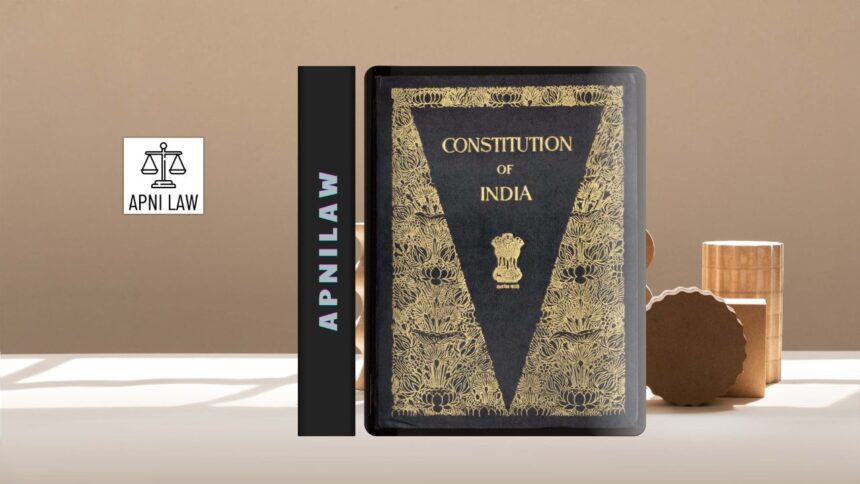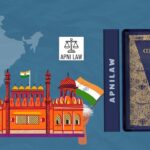Article 356 of the Indian Constitution gives the Union Government power to impose President’s Rule in a state when its constitutional machinery fails. This provision was designed as a safeguard to maintain order but has often sparked debates on misuse. Over time, it has acted both as a shield during governance crises and as a weapon in political battles. The story of Article 356 reflects India’s struggle to balance central authority with state autonomy in a federal structure.
What Is the Purpose of Article 356?
Article 356 aims to protect constitutional order when a state government cannot function according to the Constitution. The President, on receiving a report from the Governor or otherwise, can assume the powers of the state government. This step suspends the legislative and executive authority of the state and transfers it to the Union.
The framers of the Constitution saw this provision as a last resort. Dr. B.R. Ambedkar explained in the Constituent Assembly that Article 356 was necessary to deal with extraordinary situations. He hoped it would remain a “dead letter” and would rarely need enforcement. The intent was to ensure stability and prevent anarchy if a state faced collapse due to breakdown of governance, majority issues, or inability to conduct elections.
When Does the Union Impose President’s Rule?
The Union usually imposes President’s Rule in cases of genuine constitutional breakdown. This includes situations where a party loses majority in the assembly and no alternative government is possible. It may also apply during coalition breakdowns, political instability, violent uprisings, natural disasters, or when elections cannot be held.
For example, states facing hung assemblies or leadership deadlocks have seen the Union step in through this provision. At times, it has acted as a stabilizer to maintain law, order, and continuity of administration. However, these constitutional safeguards were not always followed in spirit.
How Has Article 356 Been Misused?
In practice, Article 356 became one of the most abused provisions of the Constitution. Since independence, it has been invoked over a hundred times, often for political rather than constitutional reasons. Instead of being a rare tool, it became a convenient way for the Centre to dismiss opposition-led state governments.
Indira Gandhi’s tenure saw Article 356 used 48 times, often against non-Congress governments. The Janata Party and Congress also engaged in retaliatory impositions between 1977 and 1980. Such frequent use created distrust and weakened the federal structure. Governors, appointed by the Centre, often acted with partisan motives by recommending President’s Rule without genuine evidence of breakdown.
This misuse undermined state autonomy and created friction between the Centre and the states. Instead of preserving democracy, it weakened elected governments and promoted central dominance.
What Did the Supreme Court Say in S.R. Bommai Case?
The turning point came with the landmark judgment in S.R. Bommai v. Union of India (1994). This case arose when the Karnataka government was dismissed under Article 356. The Supreme Court seized the opportunity to lay down strict safeguards to prevent misuse.
The Court ruled that the President’s satisfaction under Article 356 is not beyond judicial review. The Union must base its decision on objective material. If the court finds mala fide intent, irrationality, or lack of evidence, it can strike down the proclamation.
The Court also declared that a majority test must always be conducted on the floor of the House. Governors cannot arbitrarily claim that a government has lost majority. Further, the assembly cannot be dissolved before Parliament approves the proclamation.
This judgment transformed Article 356. It reduced arbitrary use and reinforced federalism by ensuring judicial oversight. Since Bommai, the frequency of President’s Rule has declined, and the Centre now acts more cautiously.
Why Is Article 356 Still Relevant?
Despite its history of misuse, Article 356 remains relevant in India’s constitutional framework. Governance crises still occur, and without this provision, states may collapse into chaos. Natural disasters, internal disturbances, or fractured mandates can paralyze governments. In such cases, central intervention under Article 356 ensures continuity of administration and protection of the Constitution.
For example, in cases of severe law and order breakdown or failure to hold elections, President’s Rule has provided stability. When used with caution, it serves as a vital safeguard rather than a political tool.
How Has Article 356 Impacted Federalism?
The frequent misuse of Article 356 damaged the spirit of Indian federalism. Elected governments often lived under the threat of dismissal by the Centre. This weakened democratic processes and discouraged regional autonomy. States governed by opposition parties often felt targeted, creating mistrust between the Union and the states.
However, the safeguards introduced by the judiciary have shifted the balance. Judicial review, floor tests, and parliamentary approval have strengthened state governments. The misuse of Article 356 has declined significantly in the last three decades, proving that constitutional checks can correct imbalances.
The provision now stands as both a reminder of past excesses and a tool of stability. It illustrates how constitutional misuse can erode federal principles but also how reforms can restore balance.
Can Misuse Be Prevented Entirely?
While judicial safeguards have reduced arbitrary dismissals, political misuse cannot be ruled out completely. The role of Governors, appointed by the Centre, remains controversial. Governors continue to wield discretionary powers that can tilt the balance in times of crisis. Ensuring impartial conduct by Governors is critical to preventing misuse.
Stronger conventions and political maturity are also necessary. The Union must exercise restraint and respect democratic mandates at the state level. Parliamentary debate and media scrutiny also act as informal checks against misuse.
Conclusion
Article 356 represents both the strength and vulnerability of Indian democracy. It gives the Union power to protect constitutional order but also carries risks of misuse. The history of President’s Rule shows how political interests often overshadowed constitutional principles. Yet, the S.R. Bommai judgment transformed its application by ensuring judicial oversight and strengthening federalism.
Today, Article 356 continues to be necessary in extraordinary situations. But its use must remain rare, justified, and transparent. India’s federal system thrives only when both Centre and states respect each other’s roles. The journey of Article 356 reminds us that constitutional powers are safest when guided by restraint, accountability, and the spirit of democracy.








